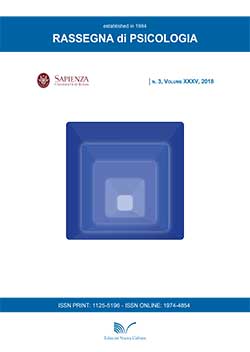Work-related stress among nurses: the effect of regulatory mode
DOI:
https://doi.org/10.13133/1974-4854/16698Keywords:
regulatory mode, locomotion, assessment, stress, nursesAbstract
Regulatory mode theory (Kruglanski et al., 2000) assumes the existence of two regulatory modes orientation: (1) assessment reflecting the propensity to evaluate goals and means and to find the best option; (2) locomotion concerning the tendency to move from a state to another. A relevant number of studies has examined the relationship between regulatory mode and organizational well-being. However, none of them allows any certain causal direction inference. Therefore, the aim of the present paper is to investigate the causal relationship between regulatory mode and stress by means of a two-wave longitudinal design. In the first phase, we recruited 120 nurses from an Italian hospital and obtained their scores on the Regulatory Mode Scale and their ratings of work stress; in the second phase, we asked the same participants to respond only to the work stress measure. Two separate multiple regression analyses were run to test the main effect of regulatory mode predominance (given by the subtraction of assessment from locomotion scores) on the two stress measures. In line with our predictions, the results showed that regulatory mode predominance predicted work stress both in the first and in the second phase. Implications, limitations and future directions for these findings are discussed.Downloads
Published
2018-11-28
Issue
Section
Articles
License
Copyright (c) 2018 Calogero Lo Destro, Daniela Di Santo, Antonio Pierro

This work is licensed under a Creative Commons Attribution 4.0 International License.

